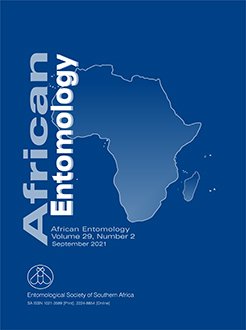Spodoptera frugiperda (J.E. Smith) is an invasive and key pest of maize, which has been recently introduced to South India. There are two strains reported, viz. rice strain and maize strain. Though several diets were tried in different parts of the world, none of them contained rice leaf powder as a component from natural host. Hence a study was conducted to evaluate the biology, nutritional indices, age-stage and two-sex life table to assess the suitability of the different artificial diets for S. frugiperda larval development. Six differently modified artificial diets were tested to evaluate the following biological parameters: duration of larva and pupae, survival of larvae and pupae, pupal weight, sex ratio, fecundity, adult pre-oviposition period, total pre-oviposition period, adult longevity and total lifespan. The following nutritional indices were determined: growth rate, relative growth rate, consumption rate, consumption index, approximate digestibility, efficiency of conversion of ingested food, efficiency of conversion of digested food and metabolic cost. Larval development showed a significant difference among the diets, in relation to the life table parameters. The results indicated that optimal growth, development and food utilisation by S. frugiperda occurred in the mixture of rice leaf powder and chickpea flour-based diet followed by the mixture of maize leaf powder and common bean powder-based diet. Evaluated diets also had a significant effect on the net reproductive rate, gross reproductive rate, intrinsic rate of increase, finite rate of increase, mean generation time and population doubling time. The values of these parameters were higher in the mixture of rice leaf powder and chickpea flour-based diet followed by mixture of maize leaf powder and common bean powder-based diet. Based on the results, the most adequate diet for rearing in the laboratory was the mixture of rice leaf powder and chickpea flour-based diet.
How to translate text using browser tools
28 September 2021
Evaluating Artificial Diets for the Fall Armyworm, Spodoptera frugiperda (J.E. Smith) (Lepidoptera: Noctuidae) through Nutritional Indices and an Age-Stage, Two-Sex Life Table Approach
K. Ashok,
V. Balasubramani,
J.S. Kennedy,
V. Geethalakshmi,
P. Jeyakumar,
N. Sathiah
ACCESS THE FULL ARTICLE
It is not available for individual sale.
This article is only available to subscribers.
It is not available for individual sale.
It is not available for individual sale.

African Entomology
Vol. 29 • No. 2
September 2021
Vol. 29 • No. 2
September 2021
consumption index
fecundity
lifespan
mass rearing
relative growth rate
semi synthetic diet
survival rate





